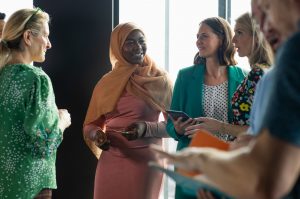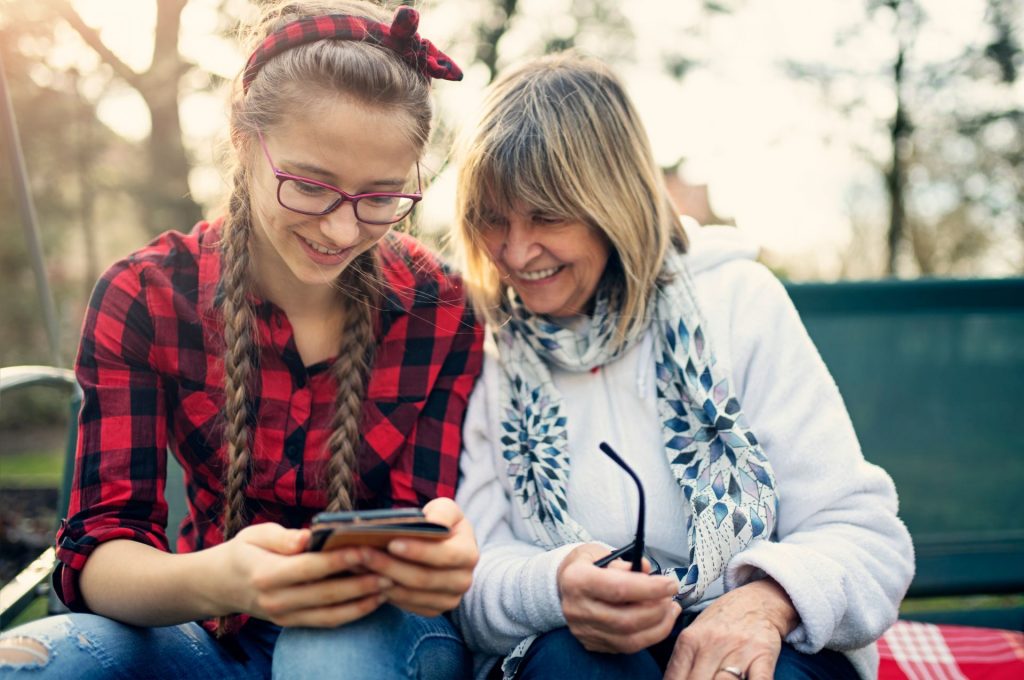Identify equipment for reuse
Contact the person in charge of managing your organisation’s IT assets at the start of the process and keep in contact throughout. They could help with:
- A clear inventory of all IT assets, including software, hardware and licenses
- Asset tracking, as this can be useful for reporting and for ensuring security throughout the end-to-end process
- Ensuring legal and organisational processes are followed
If your organisation has a regular refresh cycle, this can be a natural point at which to begin new reuse procedures.
Check whether your organisation has any contracts in place for asset disposal – you might need to amend existing contracts or postpone any action until current contracts expire.
- Smartphones and tablets will be easier to refurbish than laptops – but laptops are often needed in the community.
- It might be difficult to find recipients for some types of equipment (monitors, PCs) but these could still have value that can be leveraged for digital inclusion benefit.
- Not all devices will be suitable for refurbishment or distribution for digital inclusion – don’t be discouraged, as these can still be put to good use.
Case study
The National Device Bank
Good Things Foundation partnered with Reconome to get almost 18,000 devices to those who need them the most.

Case study
The National Device Bank
In 2022 Good Things Foundation went into partnership with B Corp certified Reconome to offer a cost neutral solution for organisations seeking to reuse their tech for social good. To date the partnership has collaborated with 75 organisations and processed 64,688 assets on behalf of those organisations, preventing 114,429Kg of e-waste and providing 17,631 digitally excluded people with a refurbished device.
In 2022 Good Things Foundation went into partnership with B Corp certified Reconome to offer a cost neutral solution for organisations seeking to reuse their tech for social good. To date the partnership has collaborated with 75 organisations and processed 64,688 assets on behalf of those organisations, preventing 114,429Kg of e-waste and providing 17,631 digitally excluded people with a refurbished device. Along the way there has been a lot of learning around what does and doesn’t have value! Around 30% of what has been collected has needed to be recycled (which does come at a cost) however 70% had sufficient value to cover the operational costs of the Device Bank and generate 17,631 devices for donation to digitally excluded individuals. We have core categories of reusable tech like smartphones, tablets and laptops that we prefer to receive, but then secondary categories of tech like desktops, printers, av equipment, monitors and even servers are always considered. Sometimes this can generate income which is then reinvested into refurbishing and distributing the reusable tech – it’s all supporting digital inclusion.

How to tell if your kit is suitable for refurbishment, recycling or disposal
If you do not have technical know-how in your organisation, find a reputable partner who can undertake diagnostics for you once you have identified potential equipment for reuse. The following criteria offers an indication as to whether devices could be refurbished.
For mobile phones and tablets:
- Age – is the device less than five years old?
- Functionality – do the touchscreen, camera and battery work? Will it connect to the internet? Is there enough storage for the software/apps you want to install?
- Aesthetics – is there obvious damage?
- Reset to factory settings – for corporate/organisational assets this can be done by the current user or be supported by an IT team or service provider.
- Accessories – is there a working charging cable with the device? It’s useful when retrieving devices from colleagues to ask for these to be returned otherwise you may need to procure accessories before the distribution stage.
For laptops:
- Age of device – is the device less than seven years old? Is the CPU less than 9 generations old?
- Functionality – does the battery work? How much RAM is installed? (For general use including being able to stream videos, 16GB RAM is recommended. For basic functionality, 8GB RAM might be acceptable.) Will it connect to the internet?
- OS eligibility – check that the device will be compatible with the OS you want to install, and that updates will be available for a period that you are comfortable with once that device has been distributed (devices falling below this standard are not necessarily without value, these could be monetised by selling to others in the supply chain & the profit used to buy eligible devices)
- Aesthetics – is there obvious damage?
- Accessories – is there a working charging cable with the device?
If devices are not suitable for reuse, they will need to be recycled or disposed of securely, safely, and legally.
Make sure your devices are of a suitable standard for digital inclusion
Before you can hand out devices, you will need to decide on distribution criteria.
- Base decisions on what will be the best outcome for the devices you have, maximising assets for the biggest impact e.g., will it meet the needs of your community better to refurbish one expensive old laptop, or to sell that laptop and buy many more mobile phones? Such purchases can still be refurbished items – it is good procurement practice/policy to always buy refurbished first where possible.
- What is an acceptable standard for devices? Good Things Foundation have set a digital inclusion ‘threshold’ for devices that requires >70% battery life, minor cosmetic defects only (D+ aesthetic standard) and a fully functional device. A good portion will not be repairable, and a small but not insignificant amount will be good for parts only. Any unsuitable devices could be sold and the proceeds put back towards digital inclusion efforts. If they must be destroyed, make sure this is done in a safe and responsible manner.
- Make sure that upon distribution, liability/ownership of device transfers to the partner organisation or the person receiving it.
- Consider relevant consumer protections (e.g., PAT testing; warranties) including ‘aftersales’ support for the recipients.
Case study
Refurbishing devices, for those in need: DVLA
DVLA’s Digital Inclusion Scheme supports schools and charities.

Case study
DVLA
DVLA’s Digital Inclusion scheme, launched in September 2021, donates IT equipment that is no longer needed by the organisation to schools and charitable organisations across Wales. The aim of the scheme is to improve access to IT for all children and underrepresented groups.
Reusing DVLA’s IT equipment offers children and young adults in Wales increased opportunity to access the IT equipment they need to develop their digital skills and supports the circular economy in Wales.
DVLA has a contract in place with E-Cycle, an IT asset management company based in Tonypandy, to refurbish and recycle our unused IT equipment. This equipment includes all types of electronic waste (e-waste) such as laptops and desktops that are no longer in use. E-Cycle ensure our IT equipment is dealt with in the most sustainable way possible, either through refurbishing for reuse or recycling.
DVLA wipes all data from any devices and sends batches of equipment to E-Cycle, often containing 100s of laptops at a time. All devices which can be refurbished are cleansed to agreed government standards and provided with operating system licences via the Microsoft Authorised Refurbisher programme before being distributed through our agreed and approved partners.

What if your kit is not suitable for reuse?
- The best thing to do is find a reputable partner who can dispose of Waste Electrical and Electronic Equipment (WEEE). They should be an accredited Approved Authorised Treatment Facility (AATF) for WEEE. An IT Asset Disposition (ITAD) would probably either already be an AATF, or have links to one.
- You could also find your nearest donation or recycling point at Recycle Your Electricals
from recycling centres to shops, charities to community drop-off points, there’s almost 30,000 locations on their locator to donate or recycle your old electricals.
Employee Tech Amnesties and Community Donations
Your organisation might consider facilitating an employee tech amnesty whereby colleagues can bring their old devices into work for donation or you might consider pooling donations across small organisations or setting up community drop off points.
This approach can carry challenges if your primary focus is to increase the number of devices reused for social good. For example, there are increased risks around data protection in handling employees’ personal devices. Pilots by organisations like Good Things Foundation and Material Focus suggest that the potential for reusable devices is very low, and this approach can lead to incurred costs for your charity or refurb partners.
Help your employees, customers and community better understand how to manage their tech – and explain what you’re doing in your organisation. You could speak to Material Focus, who run the Recycle Your Electricals campaign, or download their toolkits to make it easy. They have ready made templates, a Recycling Locator, and guidance to help you do this. Or The Restart Project
helps people rethink how they consume electricals and maybe even learning how to give it a second lease of life for themselves.
You could partner with Hubbub which runs a successful scheme, Community Calling, focused on smartphones.